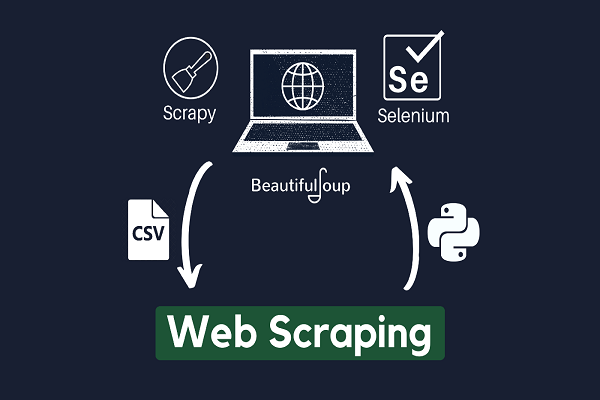The more data a brand can get, the higher its chances of performing well globally. For instance, it is estimated that a 10% increase in data can result in $65 million additional revenue for a normal Fortune 1000 enterprise.
While this highlights the place of data in business growth, it also shows the importance of using tools that boost or increase data accessibility.
Having tools that allow you to access data, whether with browsers or API, is truly a gift. And tools built with frameworks such as ExpressJS and libraries such as Puppeteer are popular because they help you achieve that in the most convenient way possible.
In the next few segments, we will consider ExpressJS and Puppeteer and build a high-level scraper following a Puppeteer tutorial easily. For more information on what Puppeteer is, Oxylabs has their own post of a tutorial written on the topic.
What is Web Scraping?
Web scraping is the automated process of harvesting data from several sources that do not support connection through APIs.
The process is automated, which means it requires less human input and eliminates the strain of manually harvesting data.
It works best when the data sources have no provision for API interaction. The scraper is then used to interact with the target server and continually rest its content without getting blocked.
What is Puppeteer and Puppeteer Tutorial?
Puppeteer is built and managed by Google, making it reliable and less likely to be taken off the market. The large community behind it also means more support and constant improvements.
Currently, it is one of the most effective ways to operate a headless browser such as Chrome or Chromium and automate testing or data extraction.
The headless browser makes it possible to initialize and run an instance without using a Graphical User Interface because everything is run under the hood.
However, for websites that allow scraping strictly through APIs, Puppeteer can develop APIs that can connect and interact with such websites and protocols remotely.
What Is ExpressJS?
While Node serves as a frontend framework on which the Puppeteer library can be built, ExpressJS stands as a backend framework.
However, they both perform the similar function of providing a robust and reliable environment on which different applications and tools can be built.
How to Setup a Scraper with Puppeteer and ExpressJS
To build a functional scraper using Puppeteer and ExpressJS, you must perform the following steps.
1. Set Up The Environment
In order to build any tool, there is the need to first download and install the framework and library to be developed.
In this case, you will need to first download and install the ExpressJS framework. Then you will need to create a project file that will house everything you decide to build.
Once that is done, open a command line within the ExpressJS project and then install your Puppeteer library.
2. Develop The Scraper
Once you have downloaded and installed all the dependencies, the next line of action is to write a brief code for the scraper.
The scraper can scrape a full website, part of the website, or take screenshots of certain parts of the website.
3. Enter The Target Address
Once your scraper is ready, decide what source you intend to scrape and get the target URL. Next, enter it into the script and commence scraping.
To properly do all this, you will need to study any available Puppeteer tutorial to understand fully.
Benefits of Using Puppeteer and ExpressJS in Web Scraping
Using Puppeteer and ExpressJS for web scraping offers numerous benefits for businesses, and below are some of the most obvious advantages:
1. Versatility
Unlike other scrapers, tools built with Puppeteer and ExpressJS can be used for a wide array of applications.
For instance, you can choose to scrape a page or multiple pages. This is crucial to help save time and encourage specificity when necessary.
You can also use such tools to directly scrape a website or connect with an API in instances where that feature is available.
2. Simplicity
Another advantage of using the ExpressJS framework or the Puppeteer library to develop scraping scripts is that the entire process of setting up the environment to collect the data you need is often quite simple.
You can also use a headless browser or a non-headless browser, depending on what exactly you want to achieve.
And whether you are writing codes for a scraper or developing an API, you can get it done with very minimal skill and effort.
3. Testing
You can also use tools built with Puppeteer to run testing either on a target website or on your website.
For a target website, testing is important to identify what dataset you will be extracted before the actual extraction process.
On your website, you may need to perform regular testing to identify key issues on the website.
These issues can then be fixed first before customers run into them, and this can save you money and prevent the loss of users.
Conclusion
Scraping with Puppeteer is simple, and aside from automated web scraping, the tools can also be used for testing to discover and fix issues on your website.

No comments:
Post a Comment